Introduction
David Sinai: Tell us about yourself and what type of photography you focus on.
Leighton Dacosta: Unlike a lot of photographers, I do not have a formal photo school education. I started learning photography back in 1992-93, doing high school yearbook and newspaper. I was the business manager for my high school newspaper team. I had to take pictures for ads and pictures for sports. I learned a lot about photojournalism and basic photography back then.
I focus on wedding photography, fashion photography, headshot portraits, and boudoir photoshoot.
David Sinai: When did you get started as a photographer, and what made you pursue photography as a career or side hustle (whatever it is for you)?
Leighton Dacosta: From my high school years, I got into the photography side with the yearbook and newspaper staff because all the cool and very attractive kids were doing yearbook and stuff like that. Fast forward about 10 years later, I joined the navy. I was stationed in Norfolk, Virginia, and photography was still a hobby. I was still taking pictures, and some people used to tell me, “Hey, take some pictures of me.” Then, one day, somebody magically asked me the question, “How much would you charge to do this?”
From that point, I’ve been learning continuously. That was sometime back in 2003, and I’ve been learning ever since. I’ve done everything. I did pets photography. I realized I didn’t like that. I did children’s photography. I realized I didn’t like that either. Then I did maternity photography. I liked it but just didn’t get deep into that.
For the most part, I did weddings for a long time. I actually loved weddings. It just got very big for me, while I like smaller and more intimate work. I wish I had learned about outsourcing earlier on, even though I didn’t know some things back then. But I wish I had the confidence that might have gotten me so far sooner.
David Sinai: What do you find exciting about being a photographer in 2022? Is it technology-related? Do you see new types of opportunities? You recently left full frame for medium format in your portrait work. Why did you switch? Are you seeing improvements in your work?
Leighton Dacosta: All these are good questions. I will frame it this way. Let’s go back to 1992. We were doing film back then. We had 12 24 36 exposure rolls, and you had to be a lot more selective. Even when weddings were being shot in the mid-90s or late-90s, say 1997 or 1998, you purchased the film for the wedding pretty much by the number of rolls before you even started. You’re talking about, let’s say, 360 frames. This is what you expected on the proof side, and even that was considered a lot.
Fast forward to 2004 or 2005. The digital era had truly started. The biggest thing I noticed during that 20-year span between 1992 and 2012 was that your skill—not all photographers will agree with me—wasn’t as important as your creativity and talent. The digital sensor allowed you to see something with your eyes that you had in your mind. You would take a shot and realize instantly that you got it wrong. You could quickly improve the shot. Not only did it allow you to do that, but it also allowed a lot of photographers the ability to take hundreds of shots in a short span of time, whereas earlier, they could only take dozens of shots.
We all know about Malcolm Gladwell’s 10,000-hour rule. Ten thousand times anything makes you better. And when you have shutters that are rated at three thousand or four thousand exposures per second, you’re an expert by the time you use that camera for your third wedding. I know guys who shoot four thousand or five thousand frames in 2022.
There are tons of opportunities, especially coming out of the pandemic era. Three things are benefiting photographers right now. The first thing is that there are people who are looking to get out and capture memories. They’re looking to capture memories because they’ve lost a lot of loved ones or they’ve lost a lot of experiences in the past two years. The second thing is even on the wedding photography side, there are more weddings planned, booked, and scheduled for this year than at almost any other time in the past 30 years. Now, that’s a huge thing.
The third thing is the most important. Clients are willing and able to pay more now in 2022 than they were even in 2019. While you still have the $50, $25, and $10 headshot type places out there, you also have a huge market for that $500–$1,500 range headshot, that three-thousand-dollar boudoir photoshoot sessions, and that ten-thousand-dollar family portrait package. I’m not saying that everybody is doing it. I’m saying all this is more common now than it was even five years ago.
Also, I left full frame for medium format in my portrait work, and I am seeing dramatic improvements in my work. When you see some of the boudoir photoshoot poses in my photos in this blog post, the dynamic range of the medium format sensor is clearly evident.
David Sinai: What do you find challenging about being a photographer in 2022? What are you doing to overcome these challenges? What types of marketing are you doing? Which marketing strategies are working better than others?
Leighton DaCosta:
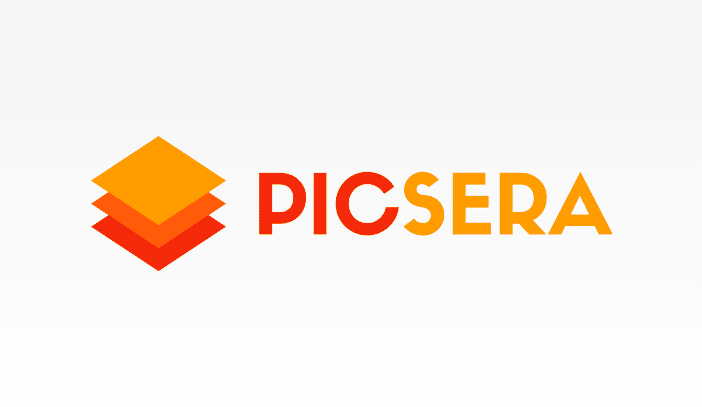
Outsource Photo Editing Services
Picsera offers photo editing and retouching, so you can focus on your business instead. Spend a fraction of the cost, time, and effort of photography with Picsera. Click here to find out more.
Burnout Is the Major Danger for a Boudoir Photoshoot and Portrait Photographer
The bad news is that 2022 offers more opportunities for burnout for a newer photographer. The reason why I say that is because it was a lot less stressful way back in the 1990s when you had film technology. Unlike in the digital photography era, you had to learn from somebody, and somebody else was teaching you. On the flip side, you learned a lot of techniques. Not only did you learn a lot of photography secrets, but you also learned a lot of business secrets along the way. But nowadays, most new photographers are only learning expenses and outflows and stuff like that. They’re not learning efficiencies, and they’re not learning how to scale their photography business.
It is interesting that IPS (In-Person Sales) has been the big buzzword over the past two or three years. But for photographers who have been around for longer than 15 years, it was always IPS. It was never shoot to burn. It’s funny how everybody is trying to get into the social media space, especially Instagram. They’re trying to get their pictures up and beat algorithms. Everyone is also trying their hand at content creation.
The stress of being popular is weighing down a lot of photographers. It causes a lot of mental issues. These things weren’t an issue in the past. As a photographer, you could normally take your own average pictures, and five percent of the population would love your work and your images—regardless of the quality—and that would get you through.
Now, it’s different. You can take phenomenal pictures, and just because you got 13 likes on a social media platform, it would make you want to hang up your camera. So, I think that’s the number one hindrance now for new photographers. The social media aspect of marketing your business is creating burnout. Photographers are doing too much, too soon, too fast. They need to realize where the inefficiencies lie.
Solution to Overcome Burnout for a Boudoir Photoshoot and Portrait Photographer
For me, the low-hanging fruit has always been the Boudoir Photography Guild. When I moved down to South Florida, the first thing I did was I joined the Photography Guild, and I got around other photographers. It was here that I realized the value of the guild. But just joining the guild doesn’t mean that you’re going to get clients. The main advantage is you’re around other photographers who are in the same business. We do have a lot more competition now. But there’s also what you call camaraderie. It’s community over competition. There’s still competition, but there’s a lot of community over competition.
For instance, there is a studio that’s over 100 years old. They’re very competitive, but when you talk to these guys, they’re very responsive. When I moved to Tampa, that was the first time I actually joined the Chamber of Commerce. What I learned from the Chamber of Commerce was easily my best experience, which prepared me for moving out to San Diego. But be warned. You only get out of the Chamber of Commerce what you put in.
Even with social media, a lot of us want to do something one time, and we want an instant response. When I joined the Chamber of Commerce, I actually got a favorable response. I attended three or four events from covering them and everything like that. Then after those three or four events, there were certain individual clients who started reaching out to me. These were pretty good clients, and they reached out to me to do their shoots, do their headshots, and stuff like that. It would be safe to say that going back to pre-social media ways of getting the word out there and marketing and networking are what would work for you. Yes, join your local Chamber of Commerce.
I’m not saying you don’t need social media. You need social media. In fact, my latest client is a TV news reporter. She just went to northern California and used my images for her press release. I did a headshot session for her. She found me through Instagram and Facebook. We were in a community forum on Instagram and Facebook.
David Sinai: Can you share some of your work with us? What was it about this client or the photographs that made this the most rewarding client engagement?
Leighton Dacosta:
The photos below were taken in Nelson’s Ghost Town during the WPPI (Wedding and Portraits Photographers International) in August 2021 in Las Vegas, Nevada. A bunch of us photographers went up there. This young lady is a photographer out of South Florida. Since it’s hard to find a phone booth, I said Hey, let’s shoot this. I shot this with a profoto light. I used my Nikon D810 (Full Frame DSLR) to shoot these photos.
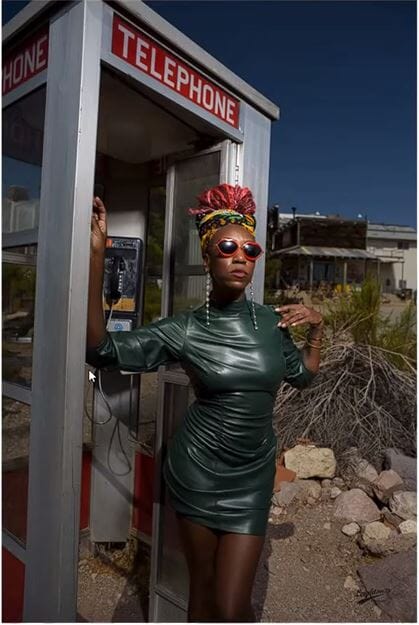
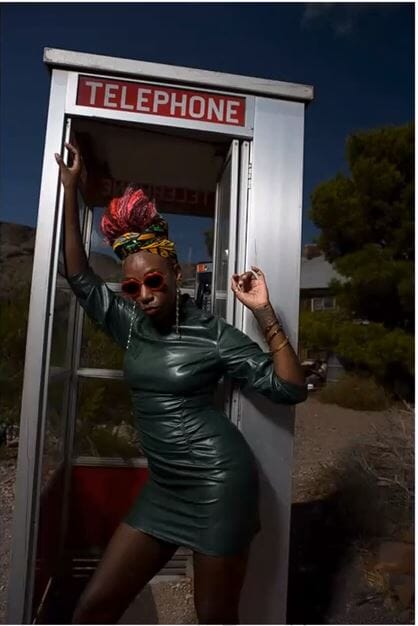
We shot the photos below last year. The young lady is from Miami, and she’s a great model.
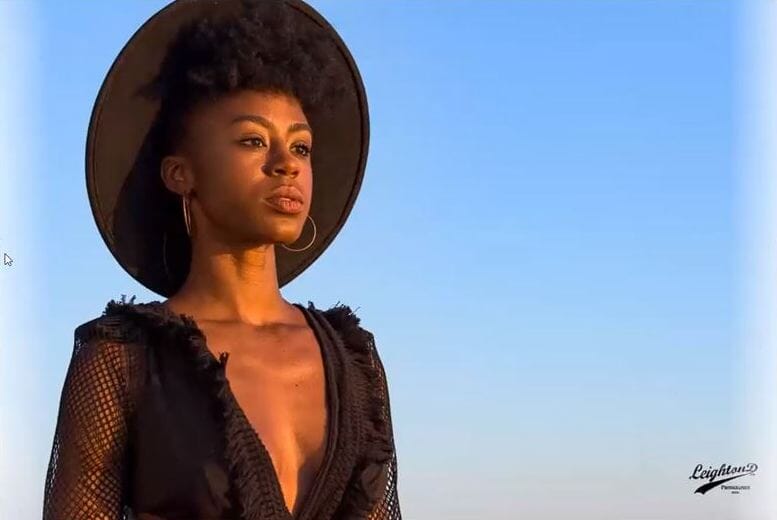
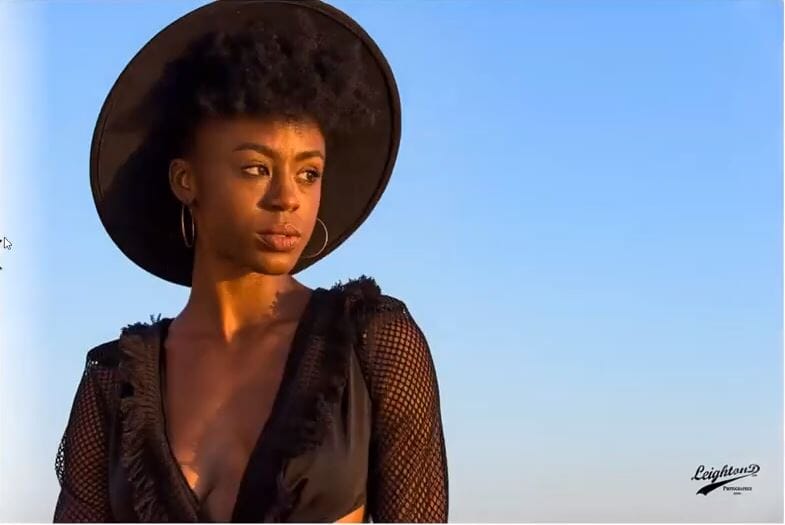
The photos below were shot in Charleston back in 2017. What I liked about these photos was I was showing one of my protégés at the time the difference between the background light and gel because a lot of photographers are intimidated by gels.
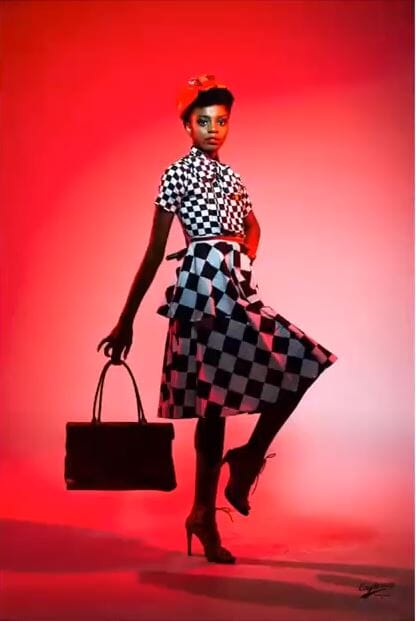
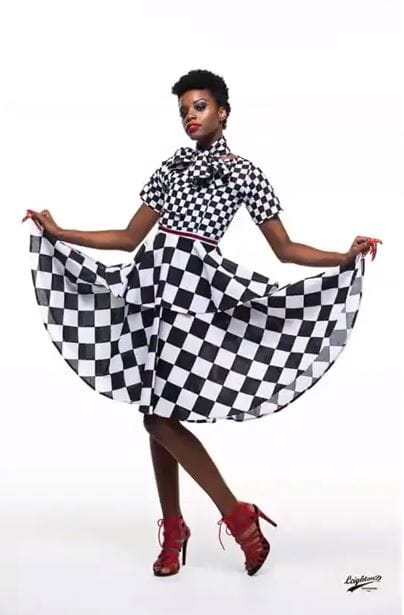
The photo below is a little bit more of a war theme. We shot this down in South Florida out there in a western ranch. The whole thing was to add contrast. You got a lot of things going on in the back, but you have the focus on the beauty and the softness in the front.
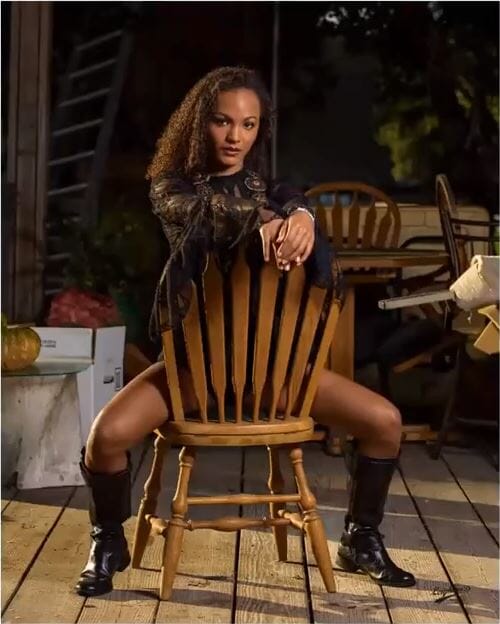
The photo below is one of my most recent headshots. This young lady went to the San Francisco market. This is actually a regular two-light setup done with a backdrop very similar to the one when we shot a video years ago.
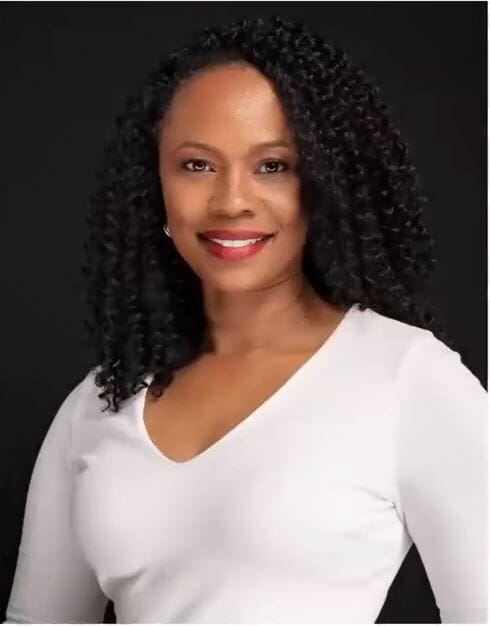
In the photo below, there is natural light, and there is profoto light as well. For the most part, I’m usually using the profoto light. Sometimes, I’ll use my flashpoints for speed lights like this one right here. I loved this shot because this is so cool and peaceful. The black jeans match the dark skin tone of the model. I was amazed by the dynamic range of the medium format sensor. This is where I noticed the difference. I don’t really notice the difference when there’s a lot of light like this one right here. I’ll notice the difference between the full frame and the media format, like in the shadows underneath the model’s arm.
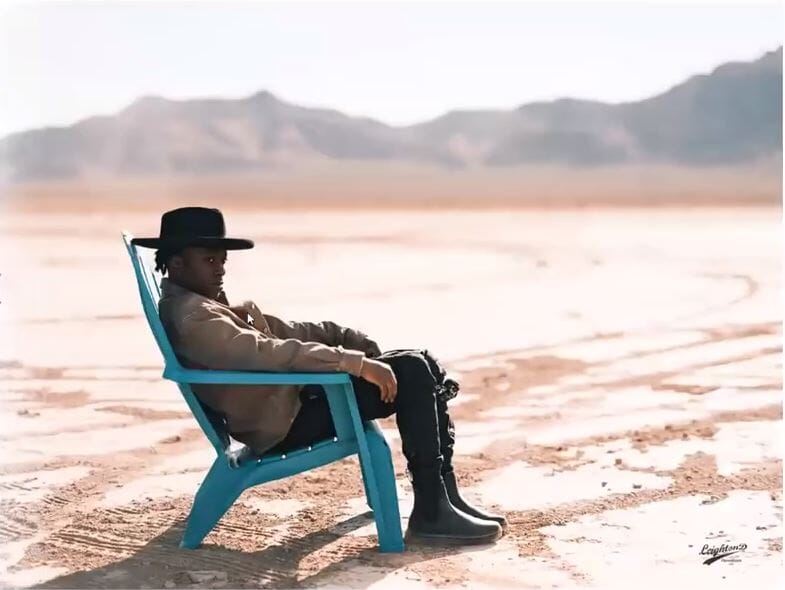
In the photo below, I was impressed by the amount of detail. That was something that usually used to get muddied in other images. This photo was shot with the Fujifilm camera. You can see the sharpness of the single strands of hair.
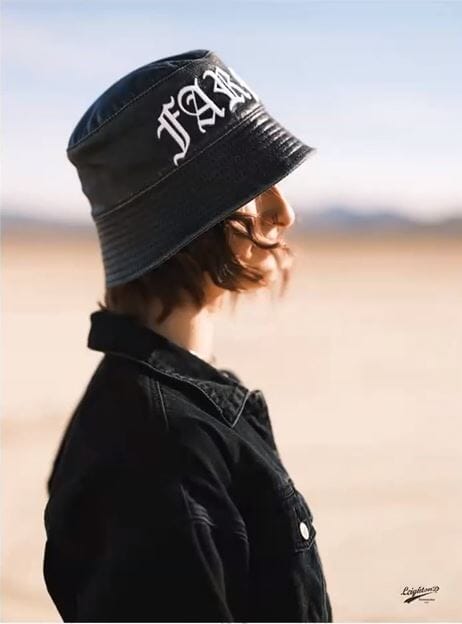
The photos below are relatively clean images that were shot with one or two lights and a backdrop. Another thing is his hat. It was really cool. We bonded over that, and this model is an Air Force veteran. He was wearing this hat because of the designer that he knows personally. Afterward, she reached out to me about it, and so that’s how you get those connections and make a community.

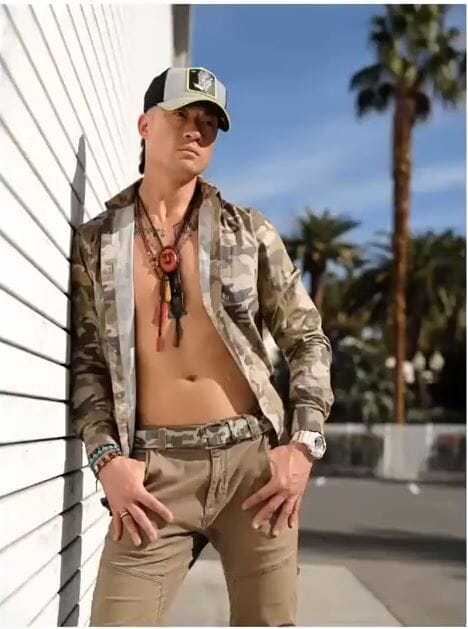
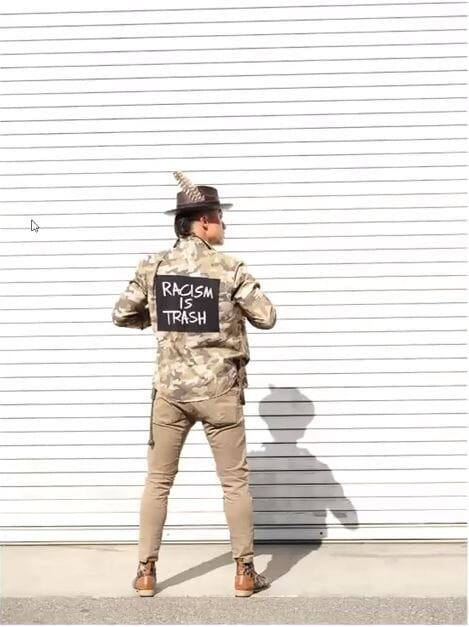
The two photos below have been blown out but not as blown out as they would have been.

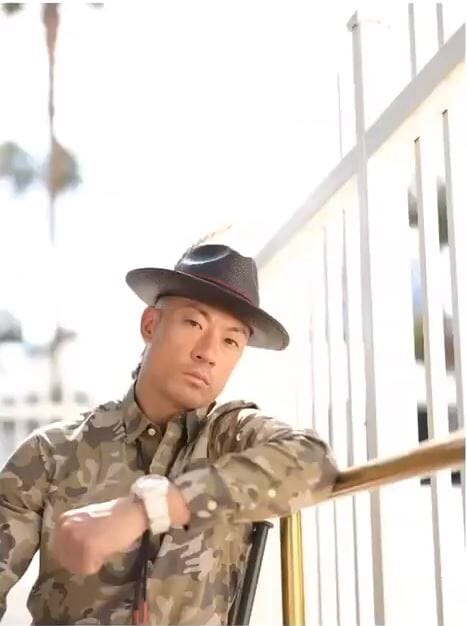
I shot the photo below in a desert in 2014.
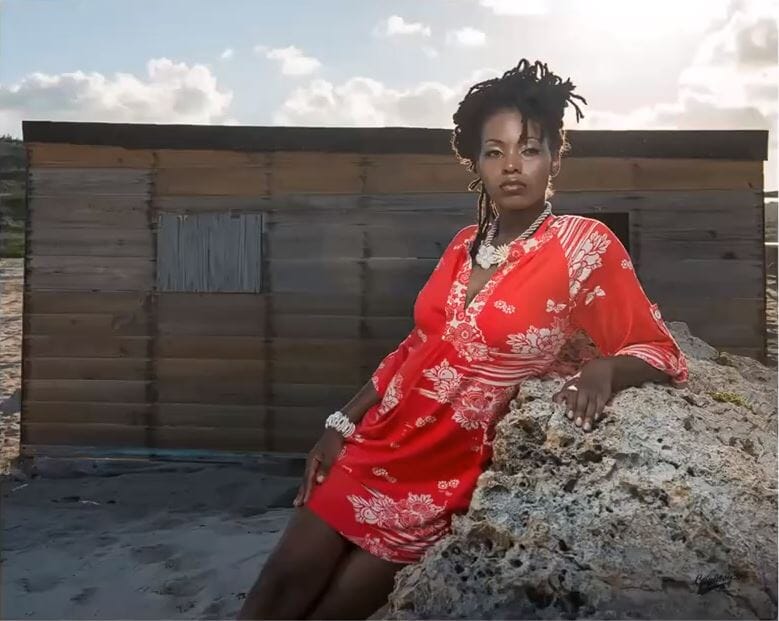
The photo below was also shot in the same desert.
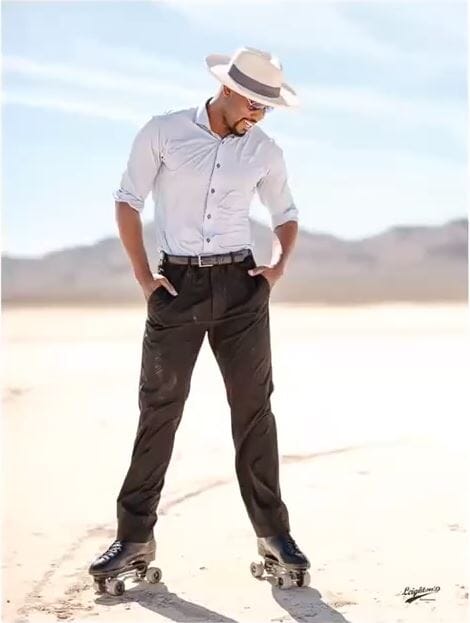
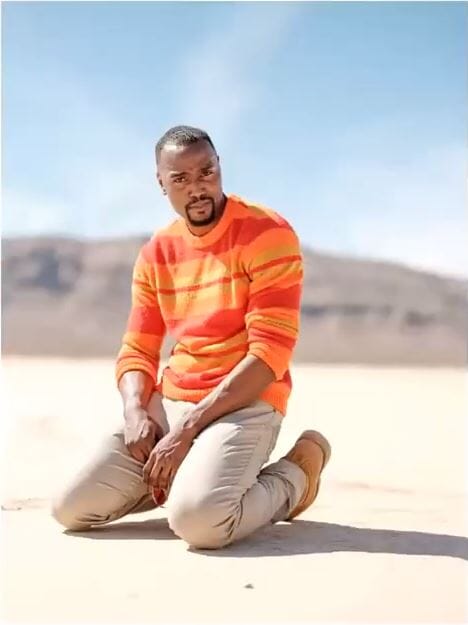
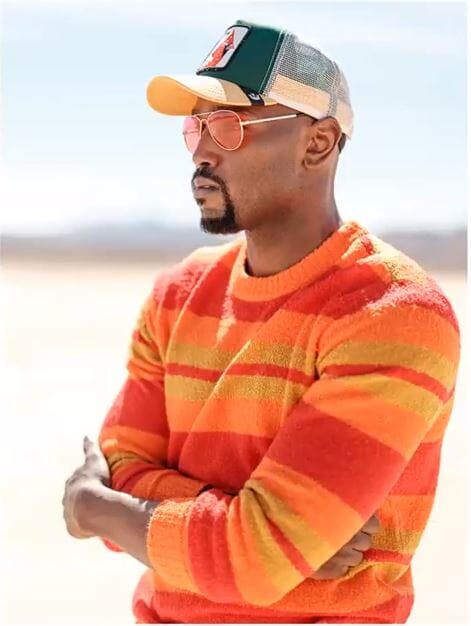
The photo below is a product shoot.
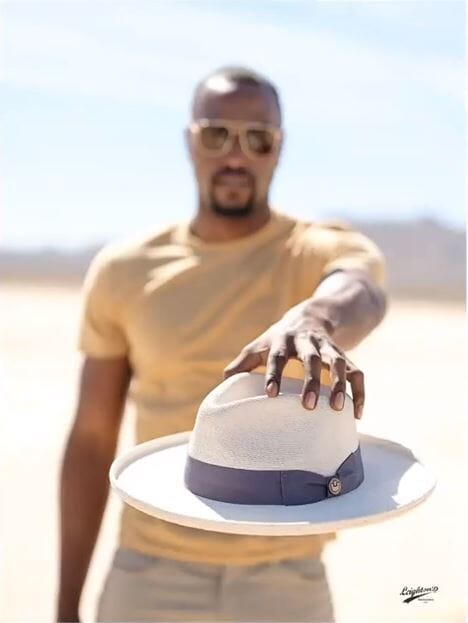
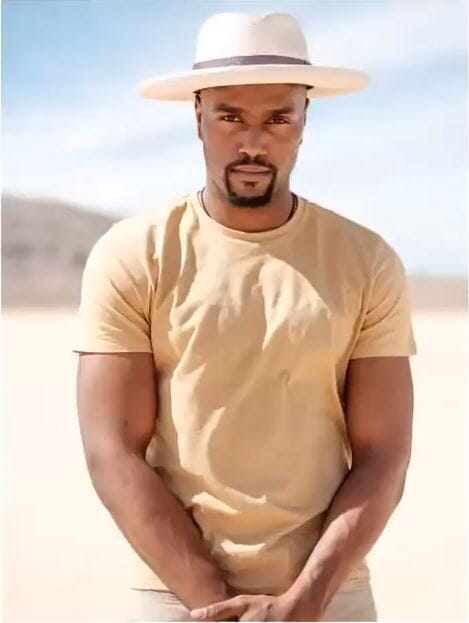
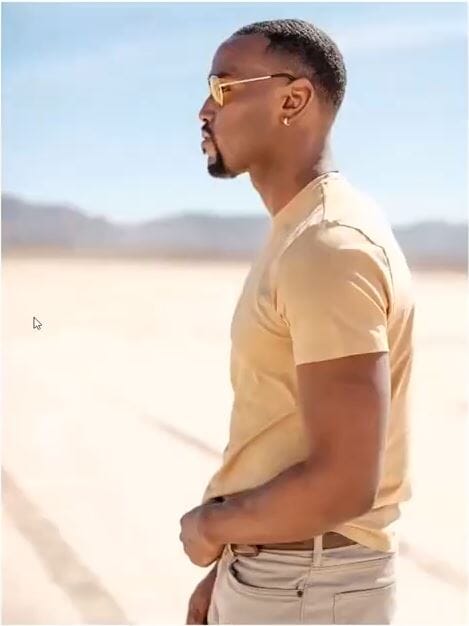
The photo below is another bread and butter shot. This headshot is straight on the camera. In the background, you can see the line that’s in the backdrop. This gentleman is a former navy executive officer in one of the battleships. He’s a civilian now. The biggest thing is they have to have confidence. I shoot from a certain angle when I do headshots, and I want eye engagement.

There’s a great balance in the photo below. The model is striking a Michael Jackson pose, and it looks like the building is falling backward.
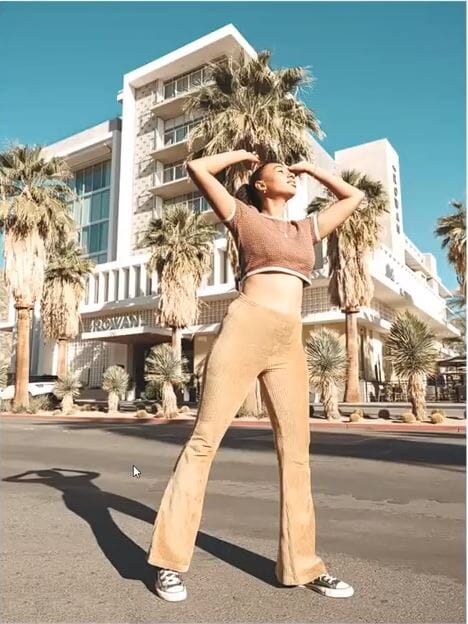
In the photo below, the sun is actually right behind the model. The light is coming from her right, obviously from behind her right, but using the white wall, and this is actually a double bounce because the sun is behind this wall. There’s no need for artificial light, as I’m using the sunlight bouncing off of the white building across the street to create that main light on our right-hand side and then using the wall on the left to actually fill her in.
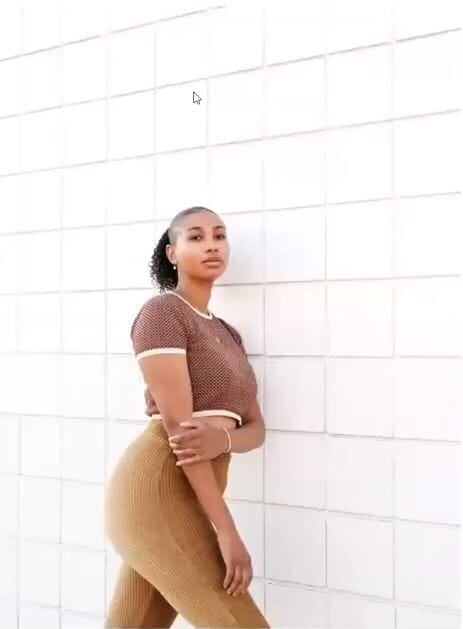
The photo below is a cool contrast shot. The van has the same stripes as the rooftop of the building in the background.
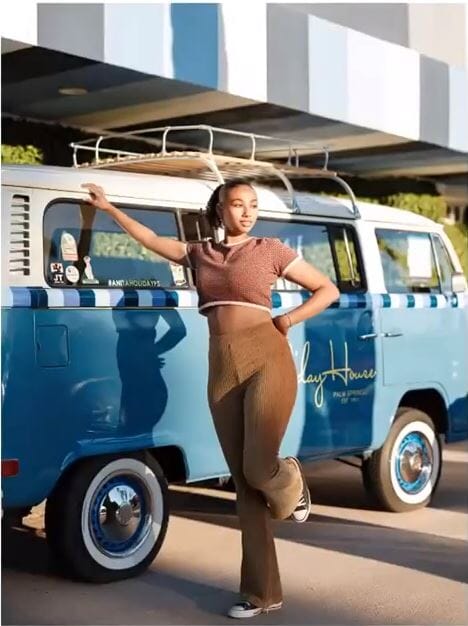
The photo below is a photojournalistic shot of graffiti in Taiwan taken in 2021.
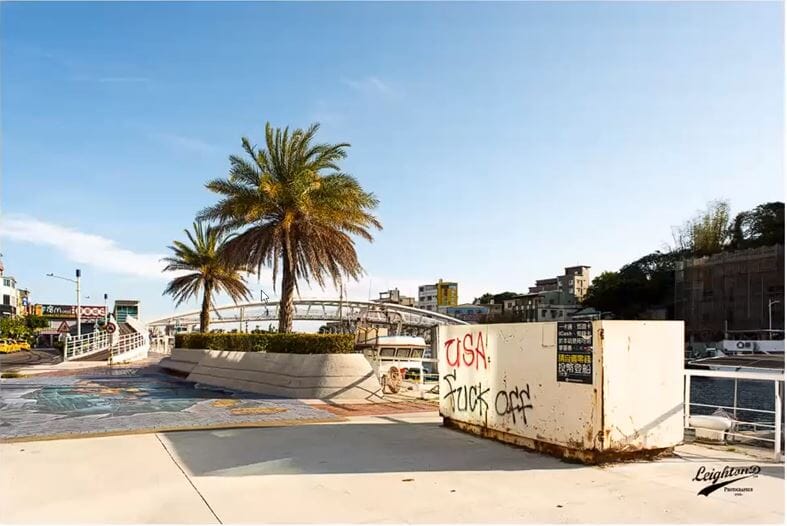
The photo below shows the nighttime skyline in Taiwan.
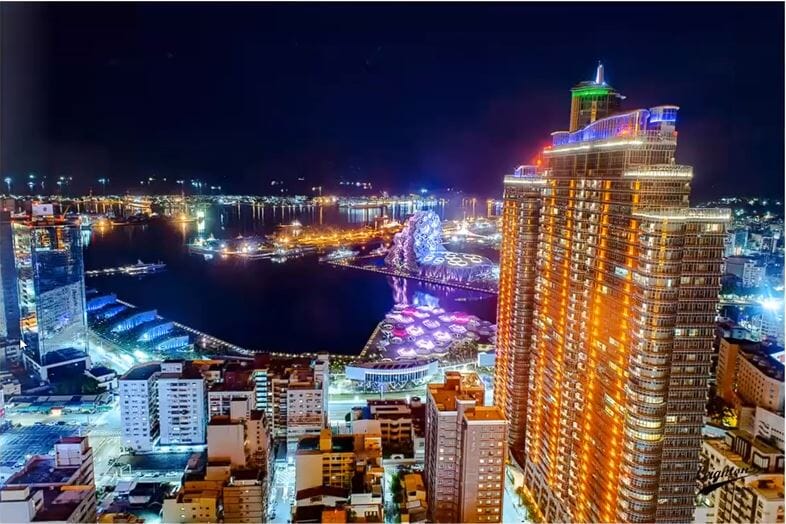
The photo below is of Taipei 101, a skyscraper in Taiwan. Normally, you cannot see all 101 floors of this building, as there are usually clouds right around the 40th or the 70th floor.

The photos below are of a boudoir photoshoot session with gels added to give the photos a little popping pizzazz. Notice that the boudoir photoshoot poses are effortless. (We are sure you will also find our blog post on boudoir photography tips very useful.)
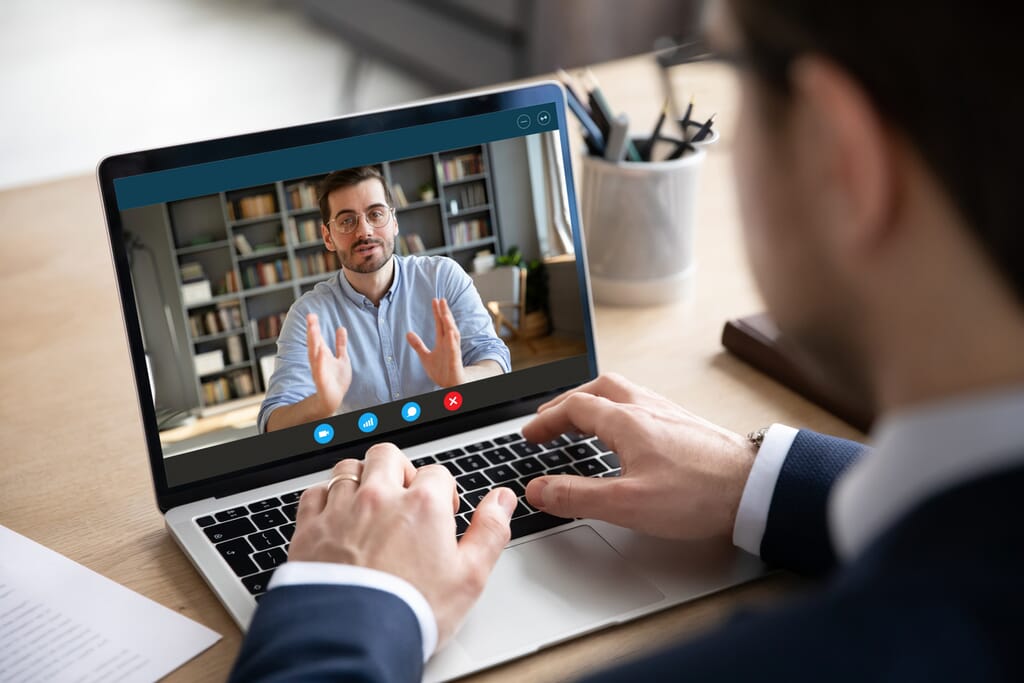
Photography Coaching Via Zoom
Have the right tools but don’t know how to properly position your apparel? Get access to the basics, tips, and secrets to taking picture-perfect apparel shots with Picsera’s Photography Zoom Coaching. Click here to find out more.
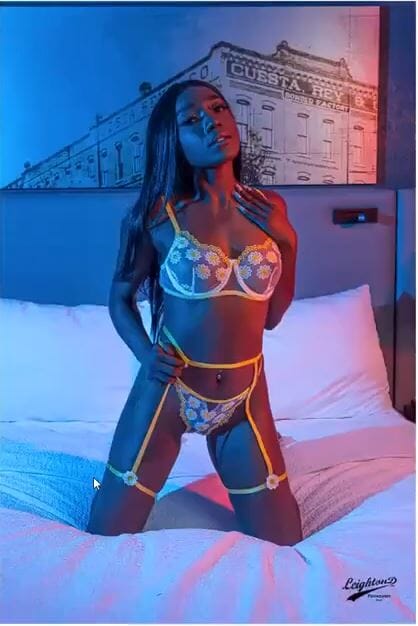
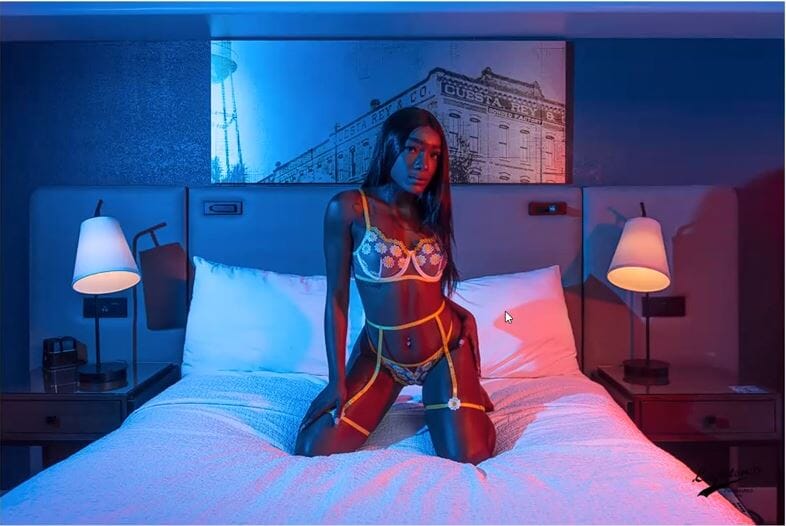
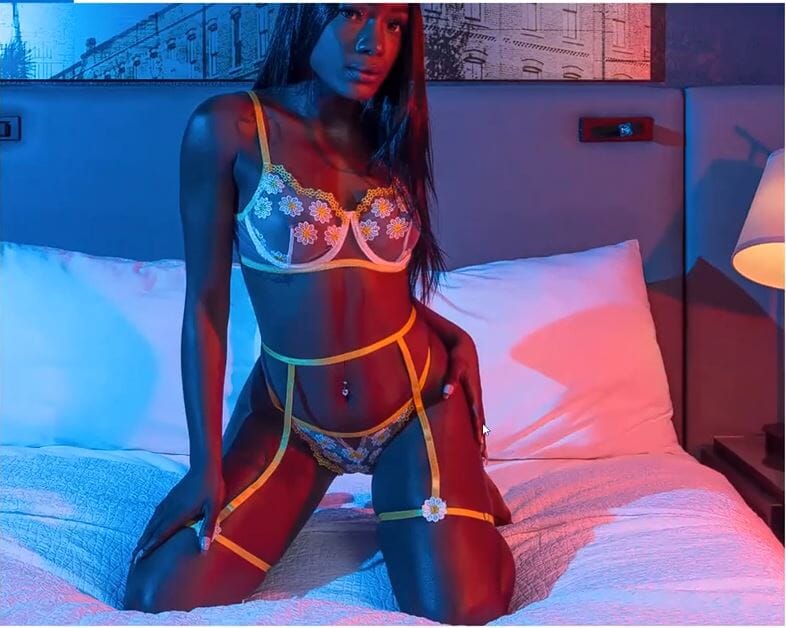
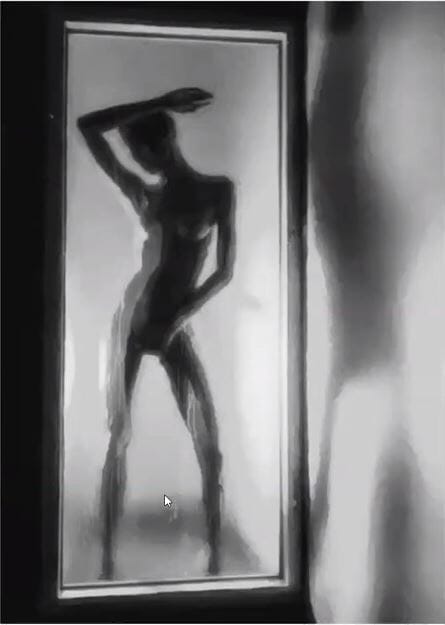
The photo below is of a young lady who is the daughter of a model I shot 10 years ago.

I shot the photo below in Jamaica. This is body paint, and there are no strobes in the photography lighting. The lighting is low-tech artificial light. I didn’t have the 1600 attachment to put on a Profoto, but this is all constantly lighted. I didn’t want to bring a lot of equipment with me to Jamaica, and I don’t like to bring a lot of expensive stuff. It took about six hours to prepare for the shoot, with the body paint alone taking a long time. Holi powder is used to create the dust and clouds that you see inside.

The photo below shows the opening of a new Waffle House.
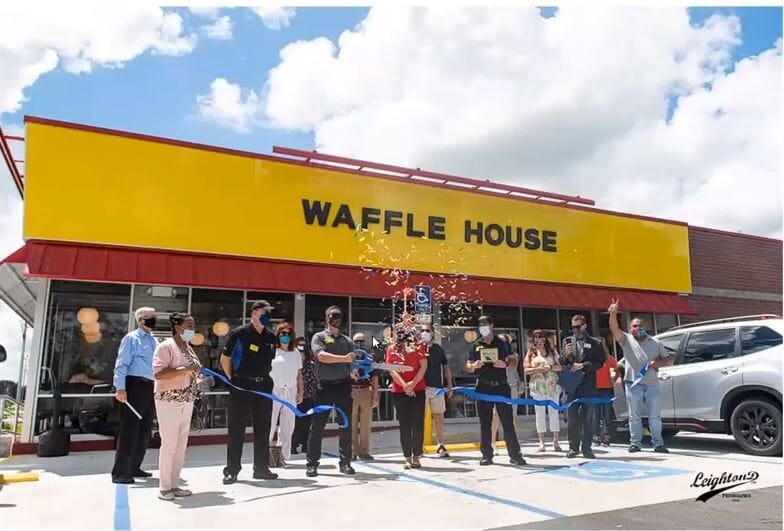
The photo below shows the staff of Mandola’s Italian Kitchen outlet. I messed up on this shot. You can see that the shadow of the modifier is visible on the blue shirt. In fact, if you look closely, you can see the subtle shadow on the clothing of three people. The good news is the photo can be retouched to fix this technical oversight.
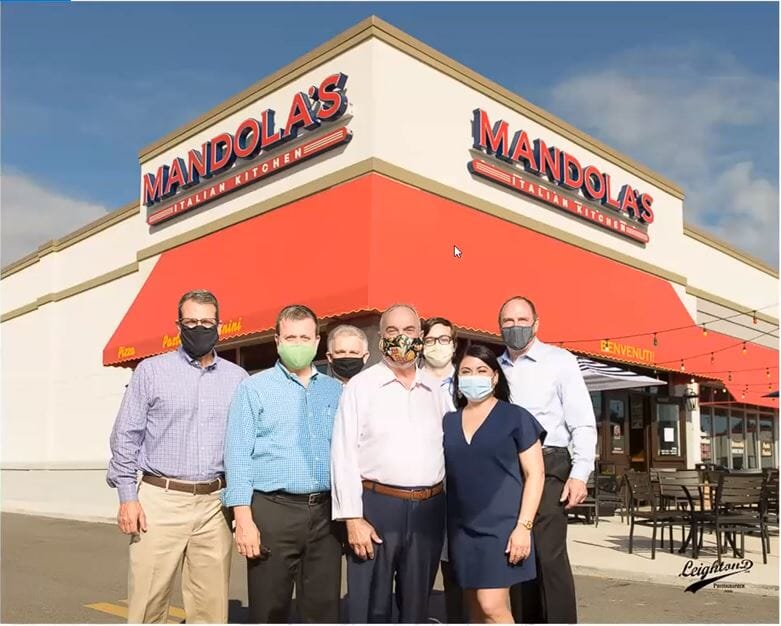
Photo of yet another ribbon cutting. Ribbon cuttings and first kisses are pretty much the same things. You only get one shot at it. The good news is the photo can be enhanced using background removal services.
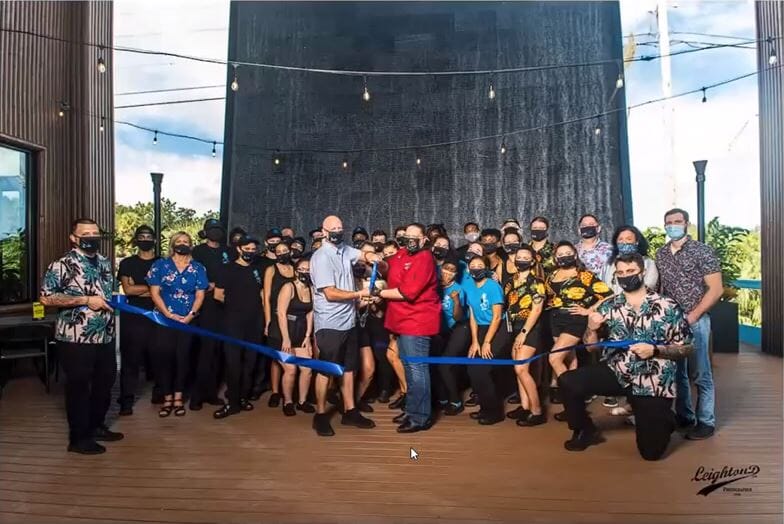
David Sinai: What are some of your goals for 2022? Business goals? Photography self-improvement goals? Are there any special projects that you’d like to do? If so, what are they?
Leighton DaCosta: Well, over the years, I’ve been moving around so many times. I found that my bread and butter have been portrait shots and boudoir photoshoot sessions. Almost anywhere I have gone—I think in the past 10 years, I’ve lived in five different cities—I’ve been continuously involved with fashion. I love fashion work. It is an ultra-competitive world out there. But it is so rewarding on the creative side. So, my goal for 2022 is to work more in fashion photography. I tell even my new photographers that the thing I love about fashion photography and sports photography—especially when I’m helping to teach on the wedding side—is that they always keep their eyes moving for something else—for another shot, another frame.
It bolsters up your reflexes, and I enjoy every single part of that. Today, I’m specializing in portrait headshots, and I do a little bit of commercial work on the side. I have some new protégés. I brought them into this. I kind of feel like their godfather. Every time I try to get out, they keep dragging me back in. So, we are looking to do several weddings in the next couple of years. It’s amazing work to train them both on the business side and also on the capture side.
David Sinai: Any recommendations for new photographers who are just getting started?
Leighton DaCosta: The number one thing I would tell any photographer who is planning for a boudoir photoshoot is, first of all, we are all learning. Therefore, never stop learning. There’s always something new to learn from every boudoir photoshoot. None of us knows everything about what we do. Ten years from now, we will need very little of what we know now. The point is we’re always learning.
The next thing I would say is to be patient. Be patient and have a specific purpose. Know what you want to boudoir photoshoot. Know what you’re trying to shoot and where you’re trying to go.
The third thing I would say is study the business. Learn the business side of photography. It is better for you to be great in business and an average photographer than to be a great photographer and average in business. The reason is you’ll be burned out fast. You won’t stay around too long.
For Boudoir Photoshoot and Portrait Photographers, I Really Want to Stress Home the Importance of the C-Word for Community
We talk about social media. And a lot of us business people, especially when we’re solopreneurs, we want to do something and plant something. But we don’t water, and we don’t fertilize it. Why I say this is because if we’re using social media as our primary marketing tool, we need to build a community. You need to build some kind of interaction. Fortunately, this business strategy has worked for me.
It’s that personal touch that matters. It’s that ability to say, “Hey, pick up the phone and call me. Or email me now.” It could even be using CRM (Customer Relationship Management) software that offers almost instant response after somebody reaches out to you even when you’re busy.
David Sinai: Where can people go to learn more about you?
Leighton DaCosta:
This is the address of my business website: https://www.leightond.com/
Here are my social media links:
Instagram: https://www.instagram.com/leightondphoto/
Twitter: https://twitter.com/LeightonDPhoto
Facebook: https://www.facebook.com/LeightonDPhoto
Thank you, David, for this great conversation.
Regardless of your photography niche, get in touch with Picsera for your 3D design and editing needs.
Need help with editing photos? Let us do the work for you. Start your FREE trial today! Your email address...

Picsera was founded in 2014 by David Sinai, a serious ameteur photographer who spent the first 20 years of his career working in the financial technology space. With a track record of building innovative solutions and working with offshore partners, David started Picsera to help photographers work more efficiently by enabling them to outsource their image editing. With very affordable rates and incredibly fast turnaround times, photographers from a variety of industries (eCommerce, real estate, weddings and portrait studios) enjoy larger, more successful businesses while still maintaining more time for their families, friends, and hobbies. Today, David and his team at Picsera assist all kinds of content creators with 3D modeling and rendering and video editing. When David is not working you’ll find him spending time with his family, mountain biking, or capturing landscapes throughout South Florida with either his pro cameras or drone.


